Abstract
Treatment of cultured chick embryo hepatocytes with phenobarbital, polychlorinated biphenyl compounds and 2,3,7,8-tetrachlorodibenzo-p-dioxin resulted in increased delta-aminolaevulinate synthase and decreased uroporphyrinogen decarboxylase activities and porphyrin accumulation; uroporphyrin and heptacarboxyporphyrin predominated. Iron had no effect on these changes. Simultaneous treatment of cultures with dioxin and phenobarbital produced a synergistic response in delta-aminolaevulinate synthase induction, uroporphyrinogen decarboxylase inhibition and porphyrin accumulation. These data suggest that an inhibitor of uroporphyrinogen decarboxylase may be generated in the liver from polychlorinated biphenyl compounds or dioxin by metabolic activation. Additionally these findings bear on the postulated role of these and related chemicals in determining the low levels of uroporphyrinogen decarboxylase activity in porphyria cutanea tarda patients.
Full text
PDF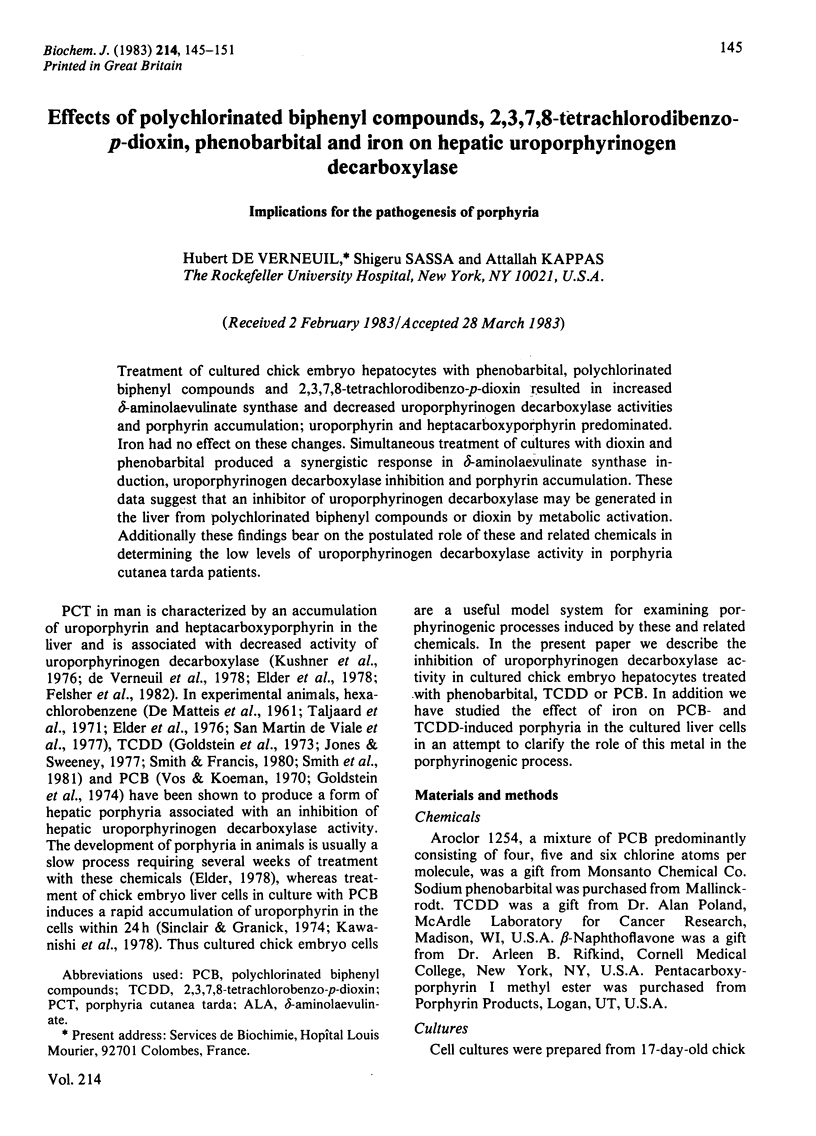
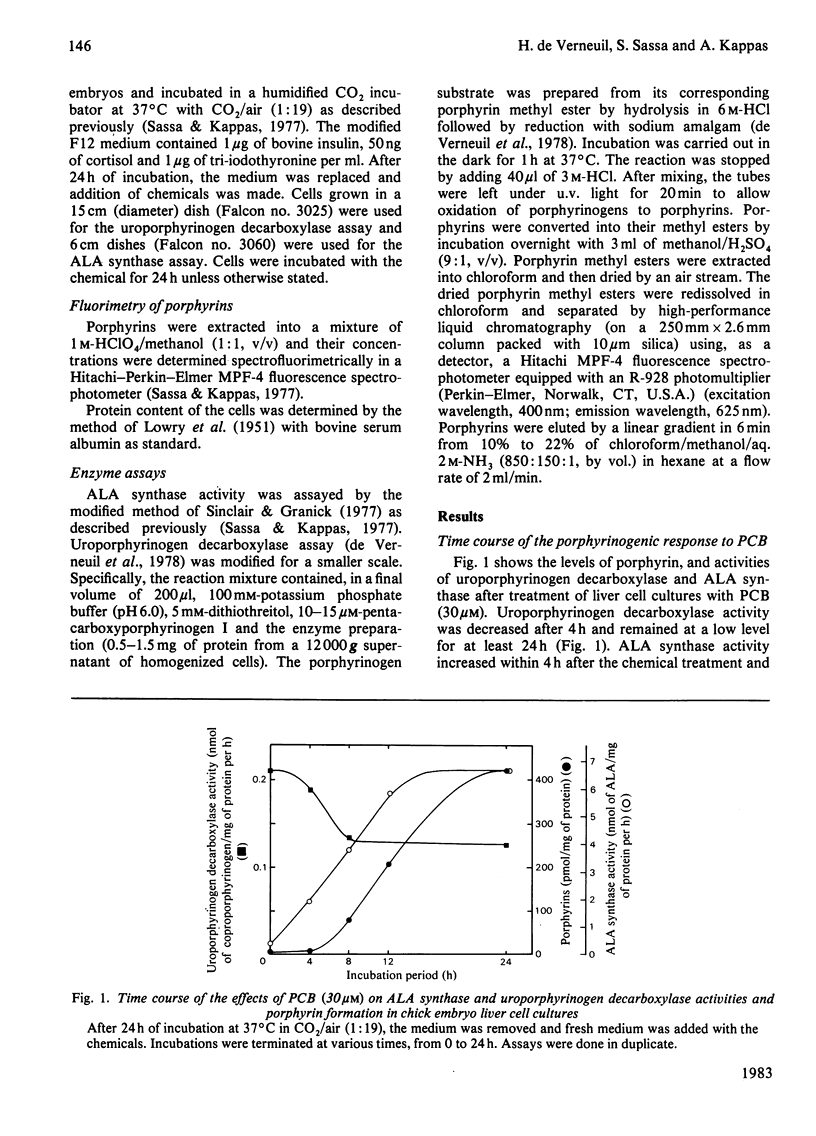
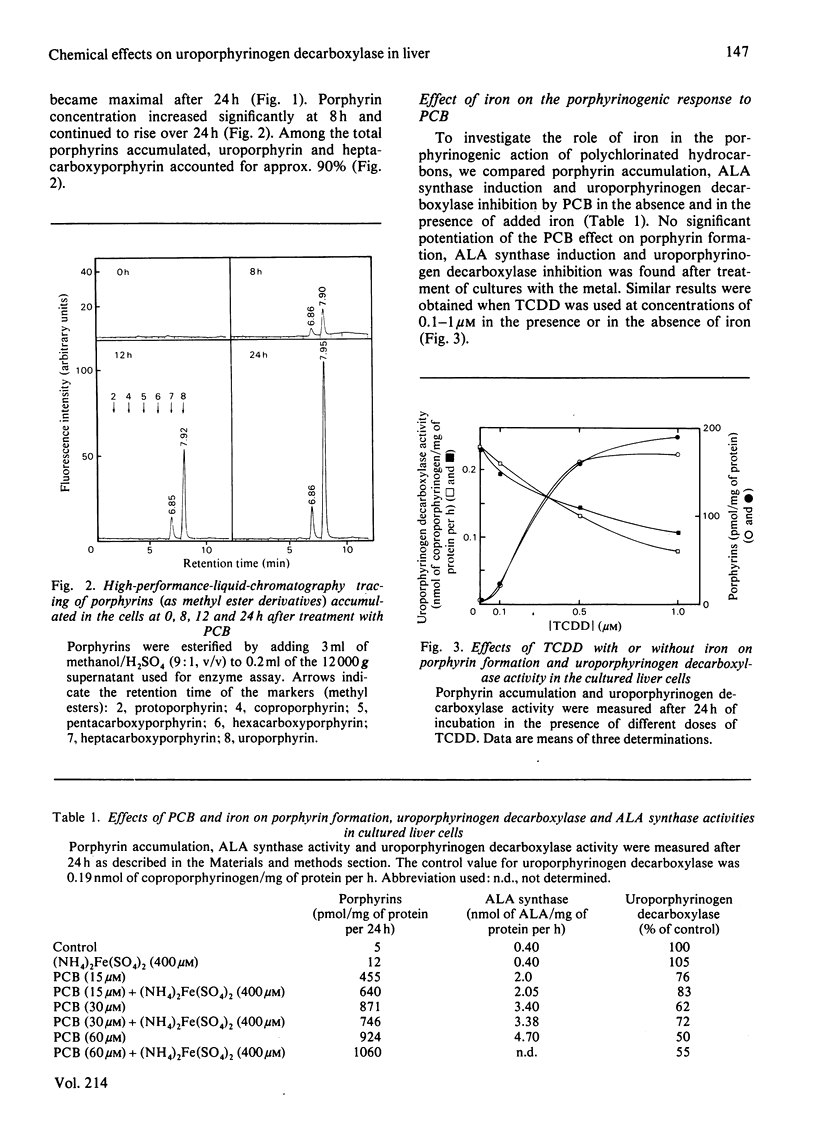
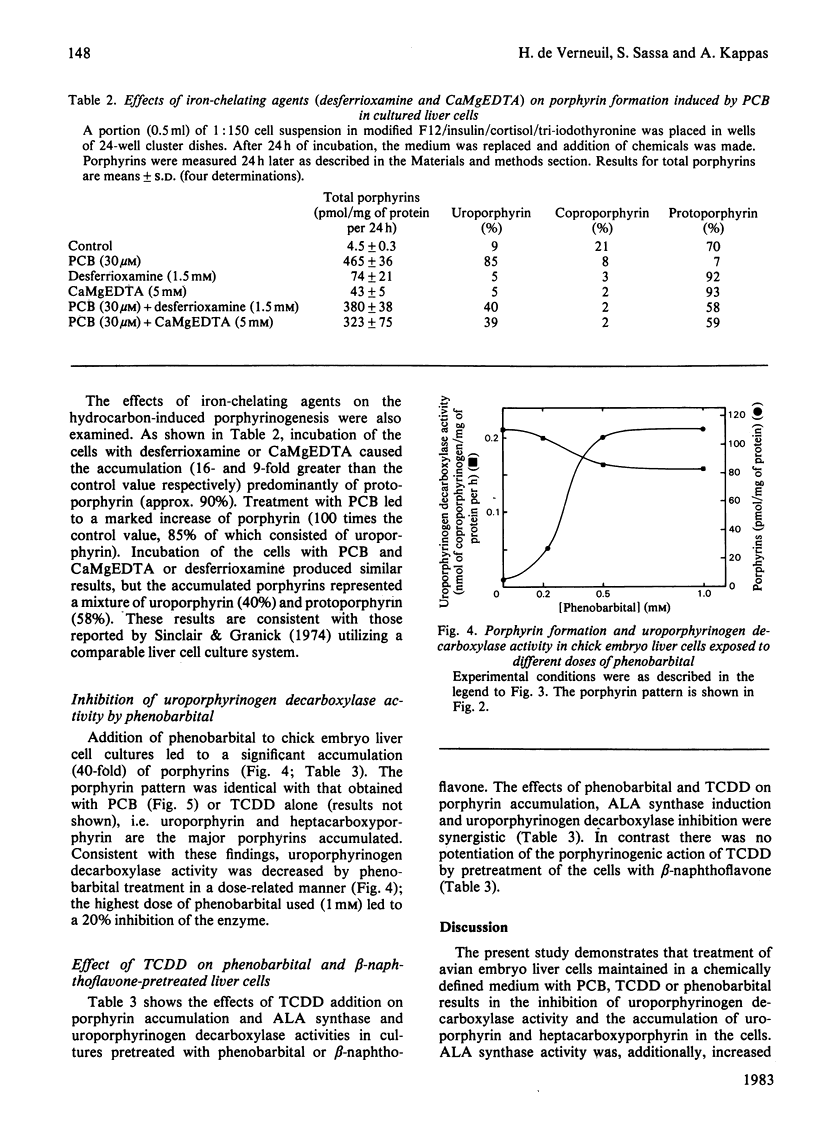
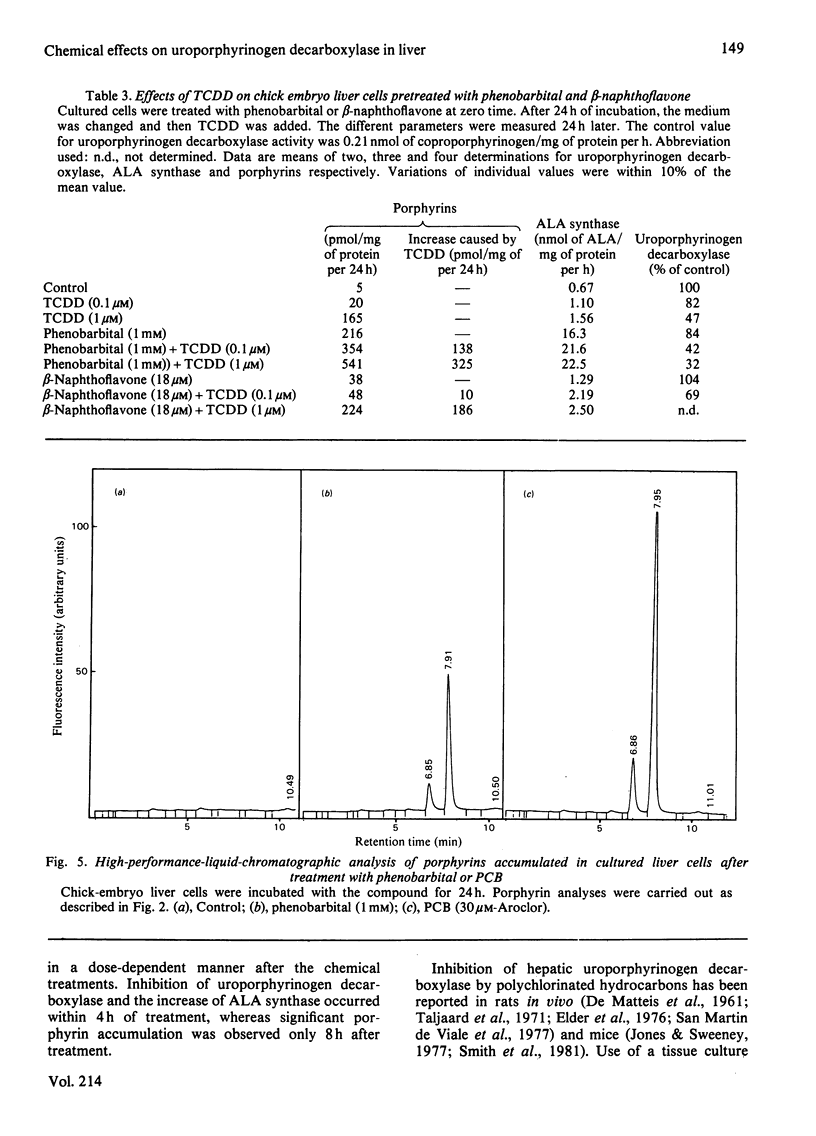
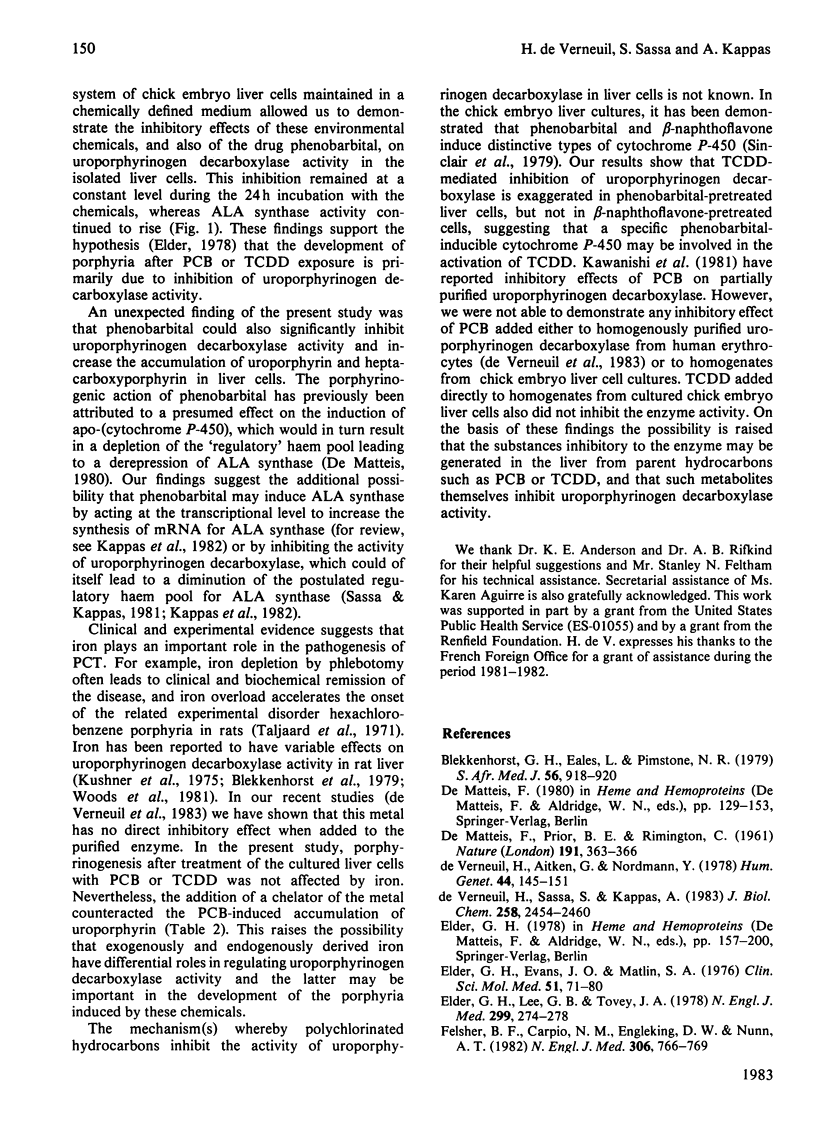
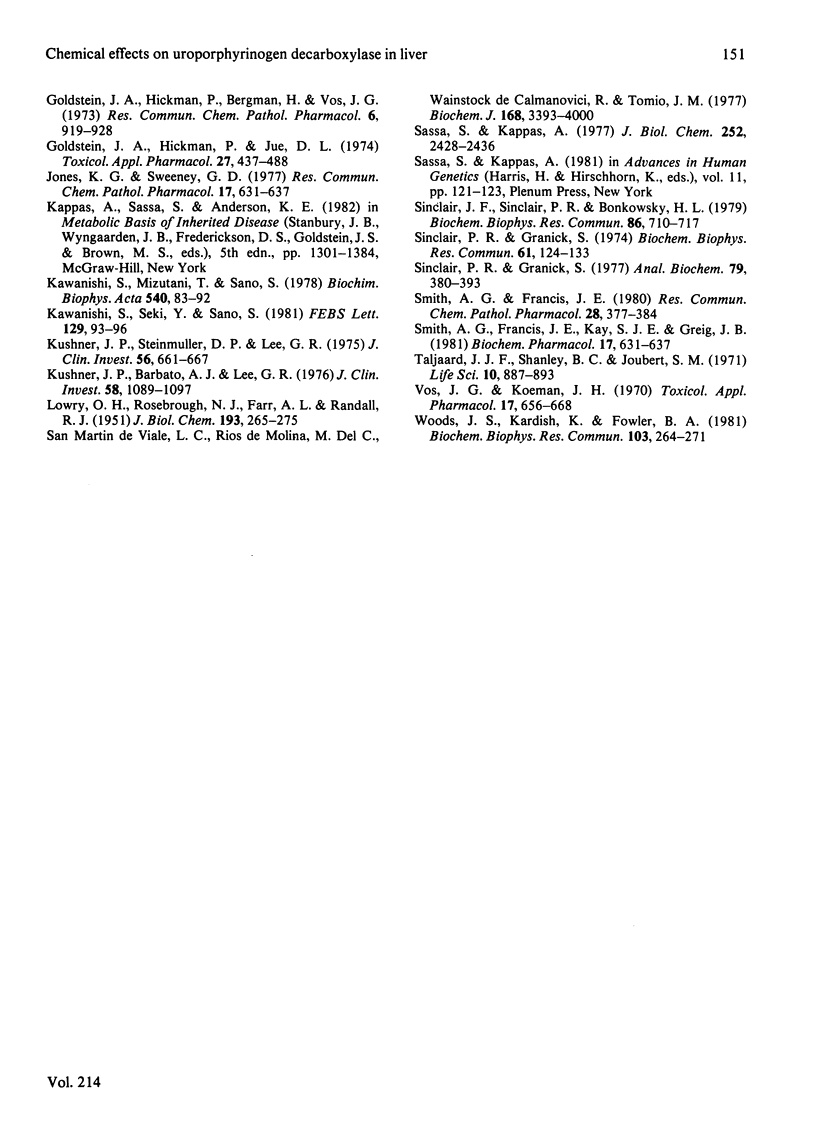
Selected References
These references are in PubMed. This may not be the complete list of references from this article.
- Blekkenhorst G. H., Eales L., Pimstone N. R. Activation of uroporphyrinogen decarboxylase by ferrous iron in porphyria cutanea tarda. S Afr Med J. 1979 Nov 24;56(22):918–920. [PubMed] [Google Scholar]
- DE MATTEIS F., PRIOR B. E., RIMINGTON C. Nervous and biochemical disturbances following hexachlorobenzene intoxication. Nature. 1961 Jul 22;191:363–366. doi: 10.1038/191363a0. [DOI] [PubMed] [Google Scholar]
- Elder G. H., Evans J. O., Matlin S. A. The effect of the porphyrogenic compound, hexachlorobenzene, on the activity of hepatic uroporphyrinogen decarboxylase in the rat. Clin Sci Mol Med. 1976 Jul;51(1):71–80. doi: 10.1042/cs0510071. [DOI] [PubMed] [Google Scholar]
- Elder G. H., Lee G. B., Tovey J. A. Decreased activity of hepatic uroporphyrinogen decarboxylase in sporadic porphyria cutanea tarda. N Engl J Med. 1978 Aug 10;299(6):274–278. doi: 10.1056/NEJM197808102990603. [DOI] [PubMed] [Google Scholar]
- Felsher B. F., Carpio N. M., Engleking D. W., Nunn A. T. Decreased hepatic uroporphyrinogen decarboxylase activity in porphyria cutanea tarda. N Engl J Med. 1982 Apr 1;306(13):766–769. doi: 10.1056/NEJM198204013061302. [DOI] [PubMed] [Google Scholar]
- Goldstein J. A., Hickman P., Bergman H., Vos J. G. Hepatic porphyria induced by 2,3,7,8-tetrachlorodibenzo-p-dioxin in the mouse. Res Commun Chem Pathol Pharmacol. 1973 Nov;6(3):919–928. [PubMed] [Google Scholar]
- Goldstein J. A., Hickman P., Jue D. L. Experimental hepatic porphyria induced by polychlorinated biphenyls. Toxicol Appl Pharmacol. 1974 Feb;27(2):437–448. doi: 10.1016/0041-008x(74)90215-4. [DOI] [PubMed] [Google Scholar]
- Jones K. G., Sweeney G. D. Association between induction of aryl hydrocarbon hydroxylase and depression of uroporphyrinogen decarboxylase activity. Res Commun Chem Pathol Pharmacol. 1977 Aug;17(4):631–637. [PubMed] [Google Scholar]
- Kawanishi S., Mizutani T., Sano S. Induction of porphyrin synthesis in chick embryo liver cell culture by synthetic polychlorobiphenyl isomers. Biochim Biophys Acta. 1978 Apr 19;540(1):83–92. doi: 10.1016/0304-4165(78)90437-3. [DOI] [PubMed] [Google Scholar]
- Kawanishi S., Seki Y., Sano S. Polychlorobiphenyls that induce delta-aminolevulinic acid synthetase inhibit uroporphyrinogen decarboxylase in cultured chick embryo liver cells. FEBS Lett. 1981 Jun 29;129(1):93–96. doi: 10.1016/0014-5793(81)80763-6. [DOI] [PubMed] [Google Scholar]
- Kushner J. P., Barbuto A. J., Lee G. R. An inherited enzymatic defect in porphyria cutanea tarda: decreased uroporphyrinogen decarboxylase activity. J Clin Invest. 1976 Nov;58(5):1089–1097. doi: 10.1172/JCI108560. [DOI] [PMC free article] [PubMed] [Google Scholar]
- Kushner J. P., Steinmuller D. P., Lee G. R. The role of iron in the pathogenesis of porphyria cutanea tarda. II. Inhibition of uroporphyrinogen decarboxylase. J Clin Invest. 1975 Sep;56(3):661–667. doi: 10.1172/JCI108136. [DOI] [PMC free article] [PubMed] [Google Scholar]
- LOWRY O. H., ROSEBROUGH N. J., FARR A. L., RANDALL R. J. Protein measurement with the Folin phenol reagent. J Biol Chem. 1951 Nov;193(1):265–275. [PubMed] [Google Scholar]
- Sassa S., Kappas A. Induction of aminolevulinate synthase and porphyrins in cultured liver cells maintained in chemically defined medium. Permissive effects of hormones on induction process. J Biol Chem. 1977 Apr 10;252(7):2428–2436. [PubMed] [Google Scholar]
- Sinclair J. F., Sinclair P. R., Bonkowsky H. L. Hormonal requirements for the induction of cytochrome P-450 in hepatocytes cultured in a serum-free medium. Biochem Biophys Res Commun. 1979 Feb 14;86(3):710–717. doi: 10.1016/0006-291x(79)91771-6. [DOI] [PubMed] [Google Scholar]
- Sinclair P. R., Granick S. Uroporphyrin formation induced by chlorinated hydrocarbons (lindane, polychlorinated biphenyls, tetrachlorodibenzo-p-dioxin). Requirements for endogenous iron, protein synthesis and drug-metabolizing activity. Biochem Biophys Res Commun. 1974 Nov 6;61(1):124–133. doi: 10.1016/0006-291x(74)90543-9. [DOI] [PubMed] [Google Scholar]
- Sinclair P., Granick S. Two methods for determining the activity of delta-aminolevulinate synthetase within intact liver cells in culture. Anal Biochem. 1977 May 1;79(1-2):380–393. doi: 10.1016/0003-2697(77)90412-2. [DOI] [PubMed] [Google Scholar]
- Smith A. G., Francis J. E. Relative abilities on a molar basis of hexafluoro-, hexachloro- and hexabromobenzenes to decrease liver uroporphyrinogen decarboxylase activity and cause porphyria in female rats. Res Commun Chem Pathol Pharmacol. 1980 May;28(2):377–384. [PubMed] [Google Scholar]
- Taljaard J. J., Shanley B. C., Joubert S. M. Decreased uroporphyrinogen decarboxylase activity in 'experimental symptomatic porphyria'. Life Sci II. 1971 Aug;10(15):887–893. [PubMed] [Google Scholar]
- Vos J. G., Koeman J. H. Comparative toxicologic study with polychlorinated biphenyls in chickens with special reference to porphyria, edema formation, liver necrosis, and tissue residues. Toxicol Appl Pharmacol. 1970 Nov;17(3):656–668. doi: 10.1016/0041-008x(70)90040-2. [DOI] [PubMed] [Google Scholar]
- Woods J. S., Kardish R., Fowler B. A. Studies on the action of porphyrinogenic trace metals on the activity of hepatic uroporphyrinogen decarboxylase. Biochem Biophys Res Commun. 1981 Nov 16;103(1):264–271. doi: 10.1016/0006-291x(81)91688-0. [DOI] [PubMed] [Google Scholar]
- de Verneuil H., Aitken G., Nordmann Y. Familial and sporadic porphyria cutanea: two different diseases. Hum Genet. 1978 Oct 31;44(2):145–151. doi: 10.1007/BF00295407. [DOI] [PubMed] [Google Scholar]
- de Verneuil H., Sassa S., Kappas A. Purification and properties of uroporphyrinogen decarboxylase from human erythrocytes. A single enzyme catalyzing the four sequential decarboxylations of uroporphyrinogens I and III. J Biol Chem. 1983 Feb 25;258(4):2454–2460. [PubMed] [Google Scholar]


